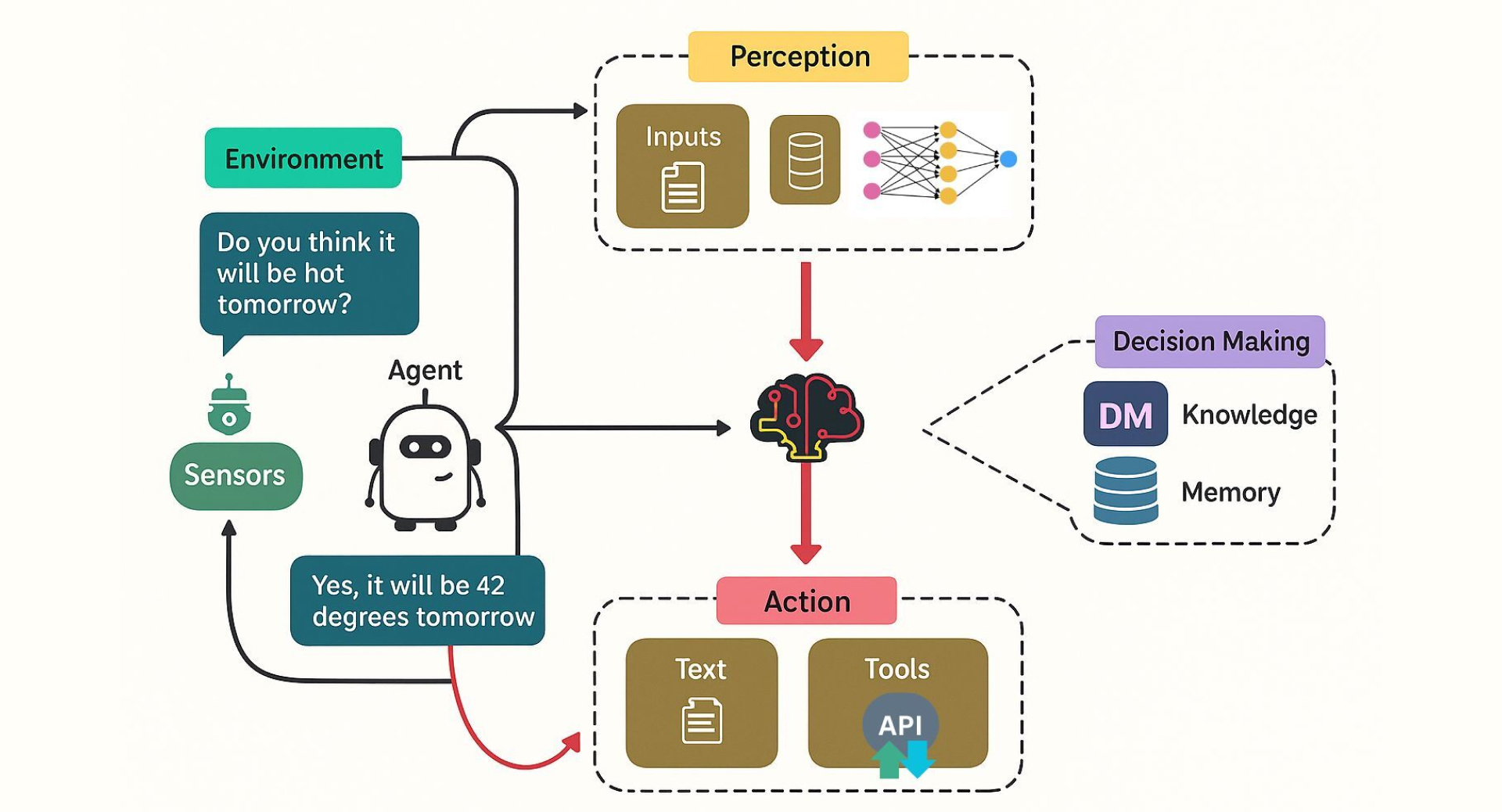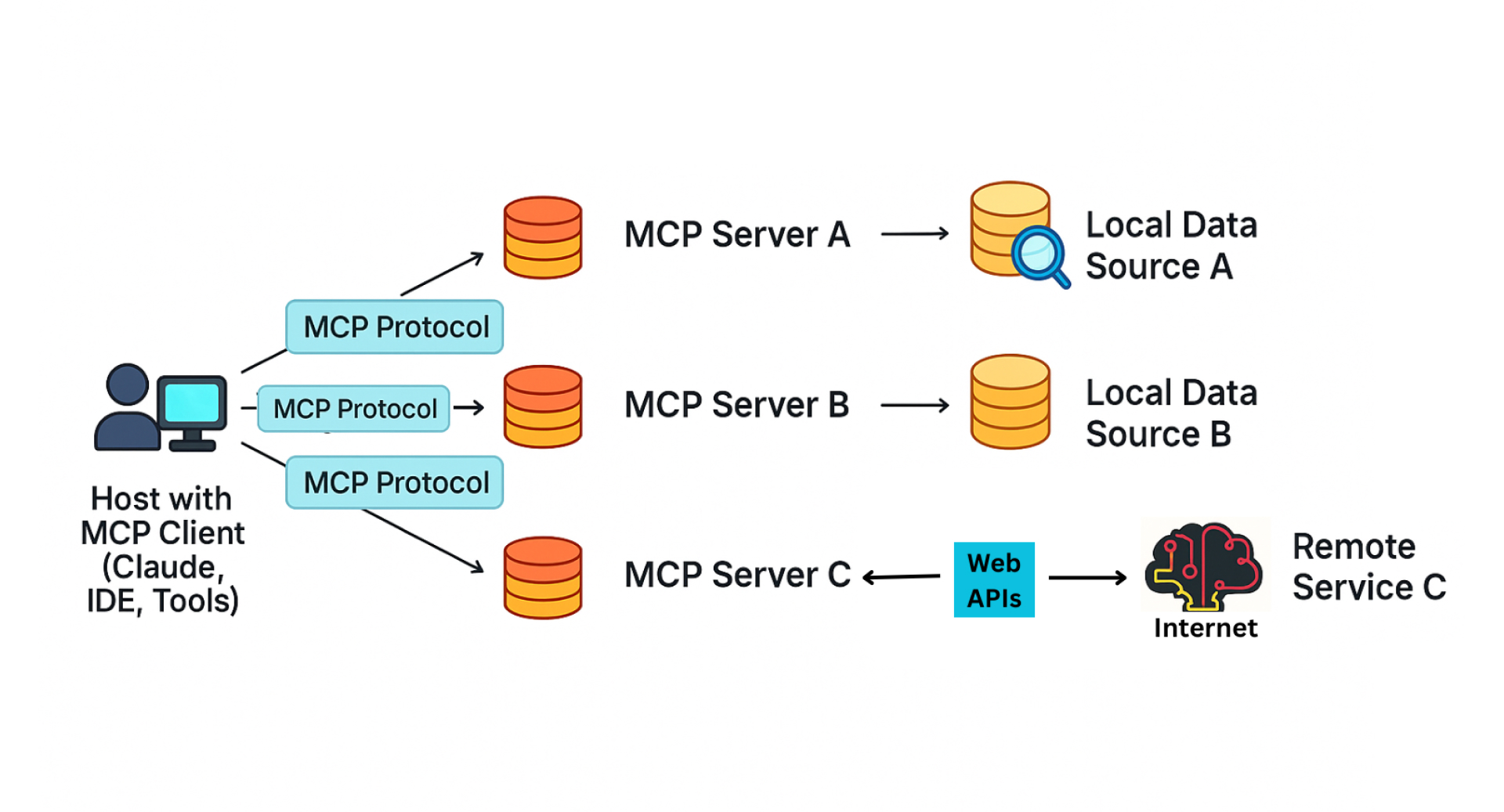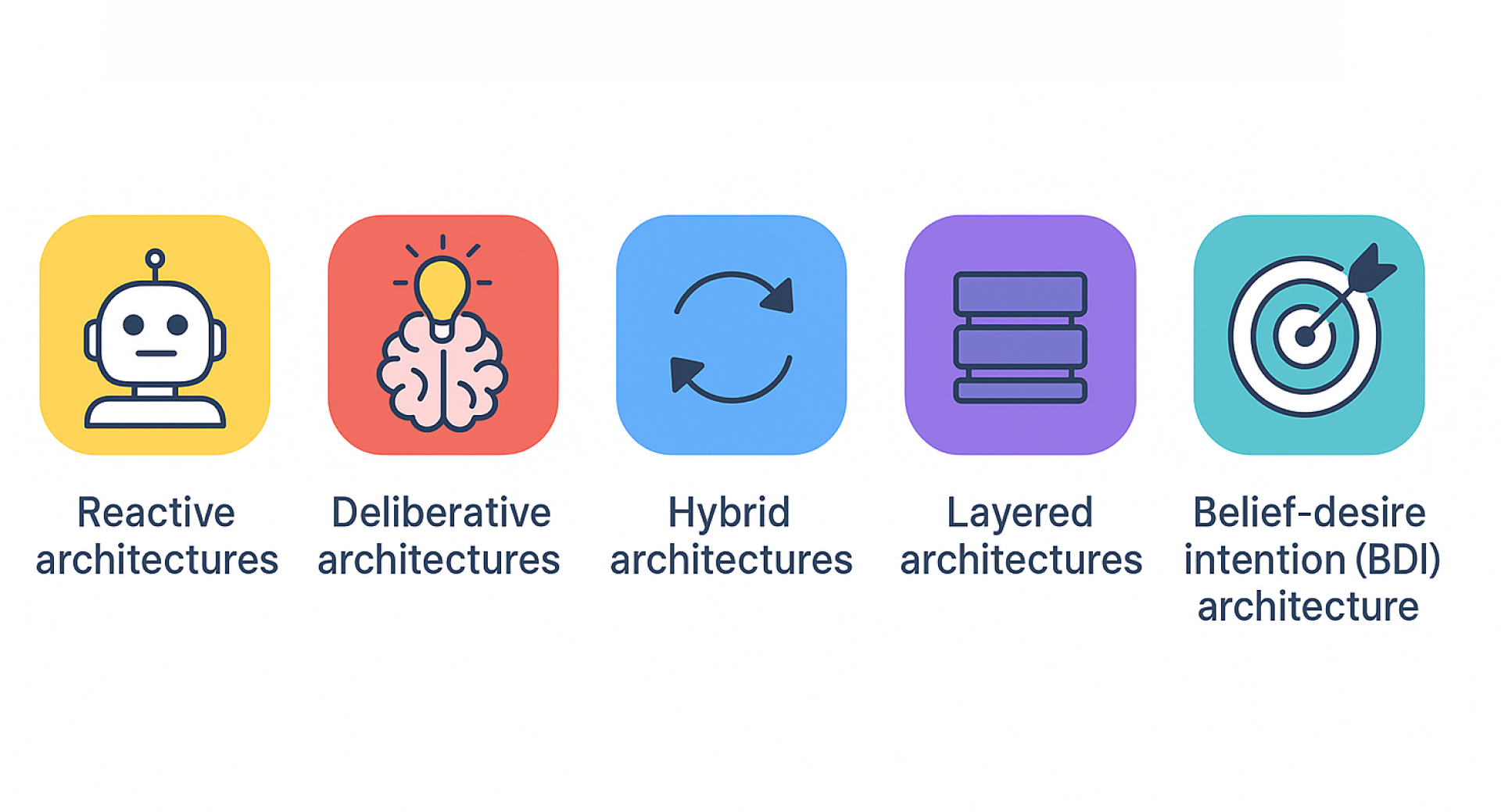What is Agent Architecture?

Team Thinkstack
February 07, 2025
Table of Contents
Similar to a business where teams gather data, management makes decisions, and operations execute them, agent architecture is the structural framework behind any system designed to operate autonomously or semi-autonomously.
It defines the parts, sensors, decision-makers, memory systems, and action units, and how they work together. This setup is what allows agents to operate independently, adapt to changes, and solve problems in real time.
Agents are intelligent systems that can make decisions and take action to achieve specific goals by sensing their environment. Modern agents combine reasoning (often a large language model or LLM) with memory, logic, and execution systems to plan, adapt, and improve over time.
Software-based agents leverage resources like text prompts, Application Programming Interfaces (APIs), and databases to drive autonomous decision-making and execution.

Core components of agent architecture
- Perception Module takes in raw data from sensors, APIs, or user inputs. Cleans it up, combines sources, and extracts what matters.
- Cognitive Module processes data and makes decisions. Uses simple rules or complex AI depending on the agent’s design.
- Action Module executes actions based on decisions. Can move physical parts or trigger digital workflows.
- Memory Module stores past experiences and the current context. Helps agents learn, adapt, and make smarter decisions.
- Planning Module breaks goals into steps, organizes actions, and picks the best path to reach objectives.
- Task Management Module breaks down complex goals into smaller tasks, assigns priorities, and tracks progress to keep the agent organized and on target.
- Learning Module helps the agent improve by learning from past actions, feedback, and new data. This module works closely with memory, planning, and decision-making.
- Decision-Making Module evaluates inputs and context to determine the agent's actions, including selecting and calling appropriate tools to achieve objectives.
- Knowledge Base stores facts, rules, goals, and environmental models. Helps agents interpret new situations and adjust behavior.
- Trigger Module monitors for specific events or conditions (e.g., user inputs, sensor data, scheduled times) that start the agent's processing cycle.
- Tool Integration Module enables the agent to extend its functionality by letting it use external tools or APIs through function calls, facilitating tasks like data retrieval and processing.
Role of Agent Architecture in System Design
The choice of architecture directly impacts how much autonomy and intelligence the system can achieve.
For example, an agent designed with strong reasoning and planning modules will make more thoughtful, goal-driven decisions than one that only reacts to immediate inputs.
A well-designed agent architecture sets up how an agent gathers information, processes it, plans actions, and executes them effectively. It also manages how knowledge is stored and used, allowing agents to learn from experience and make better decisions over time.
At the system level, good architecture ensures scalability, flexibility, and reusability. Respectively, it allows systems to handle more data and tasks, adapt to new goals without major redesigns, and reuse components across different projects, saving both time and resources.
When multiple agents operate together, a strong architecture supports decentralized control, allowing agents to act independently while working toward common goals.
Model Context Protocol (MCP)

The Model Context Protocol (MCP), was introduced in 2024 by Anthropic. MCP acts as a communication layer that lets agents connect with tools, pull data, and maintain context across tasks all in real time.
It breaks the work into three parts, the host, the client, and the server. These parts communicate with each other using a shared format, often based on JSON-RPC.
Unlike traditional function-calling, MCP supports continuous two-way communication. It’s especially useful in multi-agent setups, where several agents need to share context and coordinate without repeating the same work.
With built-in support for tool access, data handling, and permission control, MCP lets agents scale up easily, stay secure, and stay in sync. Developers can plug agents into MCP to let them fetch data, update tools, and work together without starting from scratch each time.
Eval in Agent Architecture
Unlike static models, agents work through multi-step processes like retrieving data, calling tools, and reasoning through goals. Eval is integrated into this architecture to monitor each step, catch errors early, and improve system reliability. It checks accuracy, resource use, tool decisions, and whether the output aligns with the user’s intent.
There are different types of eval:
- Offline eval tests agents before deployment using fixed test cases.
- Online eval monitors real-time performance in production.
- LLM-based eval automates scoring using models like GPT-4.
- Human-in-the-loop adds expert review for complex tasks.
Eval frameworks like DeepEval and Mosaic AI enable traceability, root cause analysis, and feedback loops for ongoing improvement. Without eval, agents may fail silently or act unpredictably. With it, developers can monitor behavior, optimize performance, and build trustworthy AI systems.
Types of Agent Architectures

- Reactive architectures react immediately to inputs without deep thinking, making them fast and simple, but unable to plan ahead or adapt to unexpected changes.
- Deliberative architectures reason and plan based on internal models, making them great for complex decision making, but slower.
- Hybrid architectures combine fast reactions with thoughtful planning, offering flexibility for dynamic environments but adding complexity to design and control.
- Layered architectures organize control into levels, helping manage complexity clearly, but coordinating between layers can be difficult, and failures in one part can affect the whole system.
- Belief-desire-intention (BDI) architecture models agents based on what they know, want, and commit to, providing human-like reasoning but making it harder to handle uncertainty and maintain efficiency.
Applications of Agent Architectures
- Robotics and automation
Used to help robots navigate environments, avoid obstacles, and perform complex tasks like assembly and warehouse automation without human control. - Simulation and modeling
Applied to simulate systems like traffic, disease spread, and market dynamics, allowing better forecasting, planning, and testing of strategies. - Game AI and NPCs
Enhance non-player characters (NPCs) with adaptive, responsive, and strategic behavior, making games more dynamic and personalized. - Intelligent assistants and digital agents
Power chatbots, virtual assistants, and recommendation engines to manage conversations, personalize user experiences, and handle complex tasks.
Conclusion
Agent architecture is what sets up how intelligent systems see what’s around them, make sense of it, decide what to do, and take action. It shapes how agents handle change, solve problems, and work reliably in the real world.
The choice of architecture, whether reactive, deliberative, hybrid, or layered, directly impacts how well a system can scale, adjust to new challenges, and achieve its goals.
As AI and automation continue to expand, understanding agent architecture is essential for creating systems that are flexible, dependable, and ready to use.